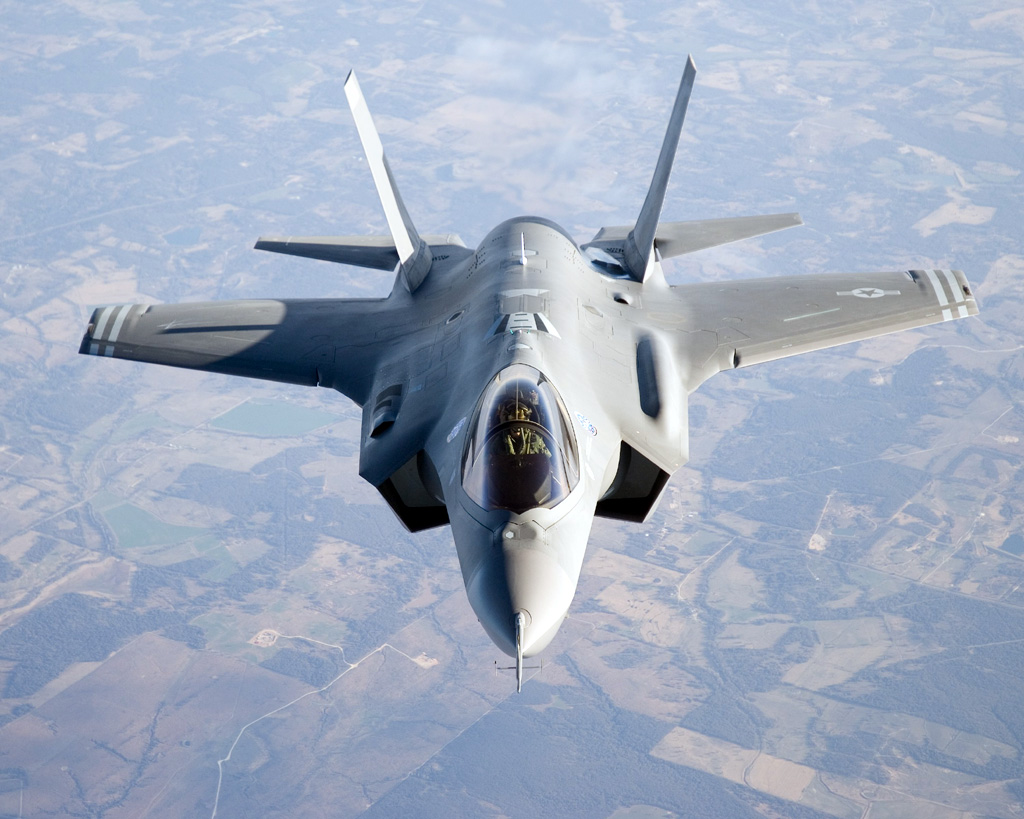
Originally appeared at VPK, translated by Stoian Stoianov exclusively for SouthFront; Edited by Desislava Tzoneva
The first squadron of the newest multi-role fighter jets F-35A entered service in the US Air Force on Tuesday, 3 August 2016. Country-head of the Air Force combat operations, Command General Herbert Carlisle, notified the US Congress in accordance with the law, according to TASS.
The General announced that the new squadron, which was formed over a period of several months, has now reached a state of “initial operational capability.” This means that at least 12 military vehicles from the group can be transferred to any part of the world where they will be able to perform combat tasks. In general, the squadron consists of 15 F-35A fighter jets.
Twenty-one pilots are prepared to fly the new fifth-generation aircraft; as for service on the ground, the required number of specialists is also prepared to do so. F-35A fighter jets are part of the 34th Fighter Squadron stationed at Air Force Base Hill, in Utah.
“The US Air Force decision to put in initial operational capability 15 fighter F-35A in the Air Force Base Hill sends a clear and strong signal to both friends and enemies of America: the aircraft could fulfil its mission,” said the head of the F-35 programme, Lieutenant-General Chris Bogdan. Over the past decade and a half, US$379 billion of the US Department of Defence’s budget has been spent on this programme.
In the coming years, the Air Force intends to buy 1,763 such aircraft, which were developed by Lockheed Martin for the Pentagon, starting 15 years ago. When mass-produced, the cost of each aircraft will be approximately US$100 million.
Late last year, a variant of the F-35B aircraft with short take-off and vertical landing came into the service of the Marines. Soon, the special modification of the new fighter jet will enter service for the US naval forces. In 2020, the United States will transfer F-35s to Europe for the first time; the transfer will be made at the RAF Lakenheath base in Suffolk, Britain.
The plane was designed using “stealth” technology and is capable of carrying nuclear weapons. Together with Lockheed Martin, some of the leading Pentagon contractors took part in its development. The project was also attended by some NATO member states and Australia, which are planning to purchase the fighter jets from the US. Israel also intends to buy the F-35A.






Don’t see how it can stealthy as to undertake meaningful missions it has to carry external ordinance.
It has an internal bomb bay. It can carry two B61 nuclear bombs. It might end up being an overly expensive, inefficient weapon but it does not give up stealth, at least with a minimal weapons load. It would only sacrifice stealth if it used its external hardpoints.
With stealth technology, I always wondered what the plan was once it had to use active radar for air to air combat. Were they expecting to leverage another radar system?
They might rely on AWACS for approaching targets, and use their BVR missiles for engagement (supposedly these missiles are self homing). As far as conventional payload internal bay capacity is approx. 5000 lbs, which is rather negligible for hard bombing campaigns. Let’s see, a squadron of F-35 ( 12 planes) assigned for ground attacks can drop 60,000 lbs ordinance per sortie, if it does not rain and things go well, they will do maybe 1 or 2 sorties per week.
Let’s take Suk 30 or 34, each plane can carry a payload of approx 16,000 lbs, totaling 192,000 lbs per sortie, the Sukhois can do a minimum of 3-4 sorties a week…..maybe one sortie per day if necessary, they are easily serviced and rugged aircraft. As far as to air to air combat, US has computer stimulations of how F35 will perform against Suk 35 or Suk 30; The F35 will try to make its kill BVR, such wishfull thinking is dependent on how good the air to air missile is, how capable it is to withstand jamming and how maneuverable the opposing aircraft is. In WVR scenarios the F35 is dead meat. Even in a prolonged air battle, the F35 has very few air to air missiles compared to 12 external pylons for the Suk 30.
It’s a flying brick with a hefty price tag; No wonder why they have jump started the F 22 program this January, soon to back on the assembly line.
Actually it’s a flying antenna with advanced over the horizon weapons.
Not a word about how this thing is an overpriced flying turd?